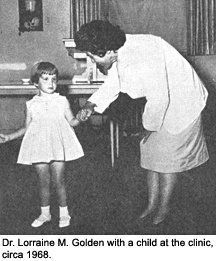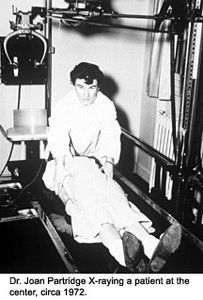Refund requests are an unavoidable part of running a chiropractic practice. Whether a patient is unhappy with their care, believes an adjustment caused harm, or simply changes their mind, these situations must be handled carefully to avoid escalation. While chiropractors are not legally obligated to issue refunds in most cases, there are times when doing so is the best business decision to protect the practice.
Kentuckiana Children's Center: 50 Years and Going Strong
Oct. 18, 2007 marks the 50th year that Kentuckiana Children's Center has provided uninterrupted chiropractic care to children with special needs, regardless of any family's ability to afford those services.1
For the majority of those years, chiropractic services and the services of other health care professionals (who chose to lay prejudice aside and work together for the greater good of the children) were provided at the center under the administration of Dr. Lorraine M. Golden and the clinical expertise and supervision of Dr. Joan Partridge.
In 1953, Dr. Golden read a local newspaper; the bold headline caught her attention. "There are over 126,000 handicapped children in the state of Kentucky alone ... there are over 15,000,000 handicapped children in our nation, and the problem is increasing daily." Not only were the numbers increasing, the gap between availability of health services was intensified daily because of an ever-growing need. She was appalled by the number of handicapped individuals reduced to local and national statistics in a newspaper headline.2
At that moment, Dr. Golden had a vision. A vision is a powerful thing in the hands of a woman who was single-minded of purpose and dedicated to a cause. Her vision was to give every child a chance to live a purposeful, healthy life. The means to this end included providing chiropractic care to each child in conjunction with other medical and allied health services. Dr. Golden's vision inspired local chiropractors and chiropractic organizations, civic and religious groups, labor unions and schools, as well as individuals and community leaders, all of whom shared in her deep desire to provide service to this underserved community.3

Once conceived, Dr. Golden enlisted the support of leaders in many fields, as well as chiropractic patients and families of children with handicaps, to build and operate a multidisciplinary facility based on chiropractic's philosophy, science and art. And it was the dedication, ingenuity, creativity and elbow grease of hundreds upon hundreds of volunteers from all walks of life that cleaned and repaired the old deserted barracks of the Nichols Veterans Hospital in South Louisville, raised the roofs of the new center and raised the funds to keep the center operating.
To care for the children, this charismatic leader drew together like-minded individuals whose focus was always on the child: chiropractors, radiologists, a pediatric orthopedist, a pediatric neurologist, a dentist, a podiatrist, an optometrist, physical and occupational therapists, speech and hearing specialists, psychologists, social workers and educators, as well as administrative, clinic support staff and maintenance personnel. All gathered under one roof to work day in and day out in the clinic, and later, in the school for special needs. Dr. Joan Partridge ensured the level of clinical excellence that was provided by the chiropractic and allied health staff, and Roberta Davis supervised the curriculum and quality of the educational program.
Financial hardship was a familiar shadow in the background of this grassroots, not-for-profit organization. But Dr. Golden never lost faith that the children would be provided for, and she never compromised chiropractic's role at the center:
"We have been propositioned numbers of times that if I were only to remove the chiropractic part, that I would receive all the funding that we needed for the rest of the program, and our answer has always been, thank you but no thank you and we say that with no bitterness whatsoever, because the people that proposition us in that way, just do not understand the need for all disciplines to work together for the good of, not that discipline, but for the good of that child."5

In light of what she had to work with, Dr. Golden and her team created a center of hope for the children and their families who benefited from the services provided at Kentuckiana Children's Center. In a video interview prepared by the center to raise additional funds to begin construction of her dream facility, Dr. Golden was asked: "What do you consider is the center's greatest accomplishment?"
"First, we have helped these special children overcome so many of their handicaps and in many cases, return to the public school system," she said. "Aside from this accomplishment, we have been able to build a staff of professionals. Our staff has the capabilities to provide the needed services while leading this center into the future long, long after my time."6
Separating the woman from the institution - in December 1998, that is what death accomplished on the physical plane. But Dr. Golden left her legacy in the hands of the many individuals who work daily to carry the center on into the future ... a golden future with the understanding and support of the chiropractic profession she dedicated her life to upholding.
Rather than one more appeal to the profession for financial support, we encourage lifelong support of Kentuckiana Children's Center as it continues the mission and vision as outlined by our founder, Dr. Lorraine M. Golden. The mission of Kentuckiana Children's Center is to improve the lives of children by providing a foundation of care through integrative chiropractic care. "Our Vision is BIG ... Healing all Children ... Hope for the Whole Child."
Please mail financial contributions to:
Kentuckiana Children's Center
1810 Brownsboro Road
Louisville, KY 40207
References
- Woodward, M. Kentuckiana and a Biographical Outline of Dr. Lorraine M. Golden, Founder and Executive Director of the Kentuckiana Children's Chiropractic Center, Inc., Louisville, Kentucky, December 1960, p 2.
- Ibid, p. 9.
- Rangnath M. "Kentuckiana: What It Is, What It Can Become." ICA International Review of Chiropractic 1991;47(4):21-9.
- Golden LM. Kentuckiana Children's Center, 1957-1993: A Dream, A Hard Fight, A Gift of Love, Kentuckiana Children's Center Archives, 1993, p 1.
- Marshall P.J. "Magnificent Obsession." 1987. Video interview with Lorraine M. Golden, Archives of Kentuckiana Children's Center.
- Video interview with Lorraine Golden, circa 1990. Archives of Kentuckiana Children's Center.
Article submitted by Kentuckiana Children's Center Board Chair, Sharon A. Vallone, DC, FICCP, and Director, Jean Elizabeth Grabowski. In December, a follow-up article will discuss where Kentuckiana Children's Center is today, its client base and plans for the future.



